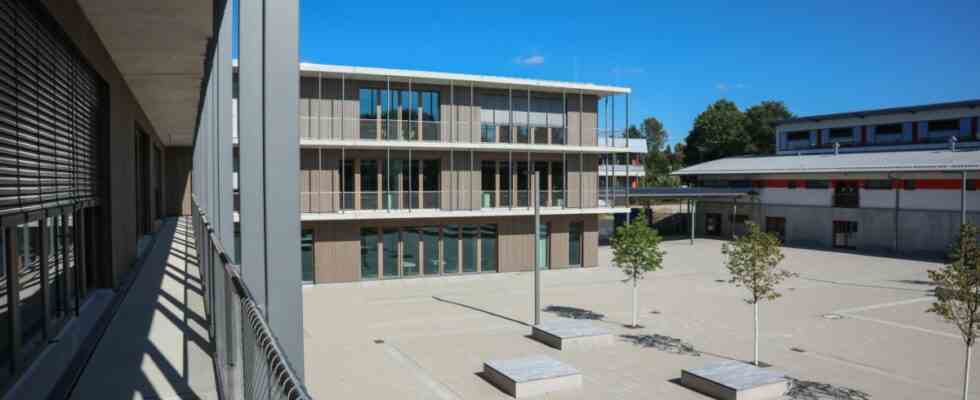The budget deliberations in the Dachau district council will start soon. The district council members usually receive an investment preview beforehand. For the school sector, this happened at the most recent meeting of the school and district committees last Friday. What District Treasurer Michael Mair presented may have frightened some people a little: “We plan to finance 250 million euros, and that’s just the school building.” The district has not been idle in recent years, on the contrary, a good 100 million euros have already been spent on extensions and renovations.
The district treasurer did not hide the problem: “We actually have no more money.” In the next district budget, an increased apportionment power of the municipalities will have an impact of three million euros. But the additional income has already been mathematically spent again: around two million euros through tariff increases in the personnel area and around one million euros for the planned citizens’ allowance and back payments for heating costs. For this purpose, the youth welfare office is to take on new tasks that were previously the responsibility of the district, which means that eight new clerical positions will be required. “The district has to afford it,” says Mair. In complete contrast to the voluntary benefits, which alone amount to twelve million euros. Funding is difficult here. District Treasurer Mair emphasized that the decision as to what one could or wanted to afford was “a political discussion”.
Two high schools are being built
One shouldn’t be surprised at the high sums involved in building schools: there are already three grammar schools in the district, and construction of the fourth, the Karlsfeld grammar school, started in the spring; According to the current cost forecast, it comes to 101 million euros. The tender for grammar school number five in Röhrmoos is currently in progress, and construction will begin next spring. In addition, the district of Dachau has two state Realschulen in sponsorship and is involved in the two Realschulen in archiepiscopal sponsorship via a school operating agreement: the one in Weichs and the one in Markt Indersdorf.
According to Mair, the district of Dachau still has a high number of transfers to grammar schools, but at the same time there is also a high return to secondary schools. Therefore, the district should not let up in development here either. At the secondary school in Markt Indersdorf, 34 classes are expected in the next school year. But if the number of students stays that high, it could even be 40, then there is a serious problem of space. The district is therefore planning a wooden pavilion to be built on the running track. In terms of costs, Mair expects “a mid-single-digit million amount”. The next planning phase will bring more clarity to the financing requirements.
There are still many question marks about the costs
The costs for the planned new building of the Greta Fischer School in Dachau and the planned redesign of the playground there are also still open. The district treasurer expects a “low double-digit million amount”, a good quarter is likely to be subsidized by the state, but when it can start is not yet foreseeable. As is well known, the negotiations with the city of Dachau, which does not want to cut the space, still have to be concluded: During the folk festival in August, the space for the showmen’s vehicles is required.
Various renovation and optimization measures are planned for the next few years at the Archbishop’s Realschule in Weichs and at the Archbishop’s Realschule and Fachoberschule Markt Indersdorf, in which the district will participate. After all, they want to tackle the lack of school sports facilities and create more capacity. According to Chamberlain Mair, the district is still looking for partners with gyms “in which it can participate financially”.
District Administrator Stefan Löwl (CSU) called the balance of what had been created in schools in recent years “very impressive”. A lot has now been done for vocational and secondary schools, but not so much for the existing high schools, but all in all, Löwl concludes: “We don’t have to hide as a school location.”

